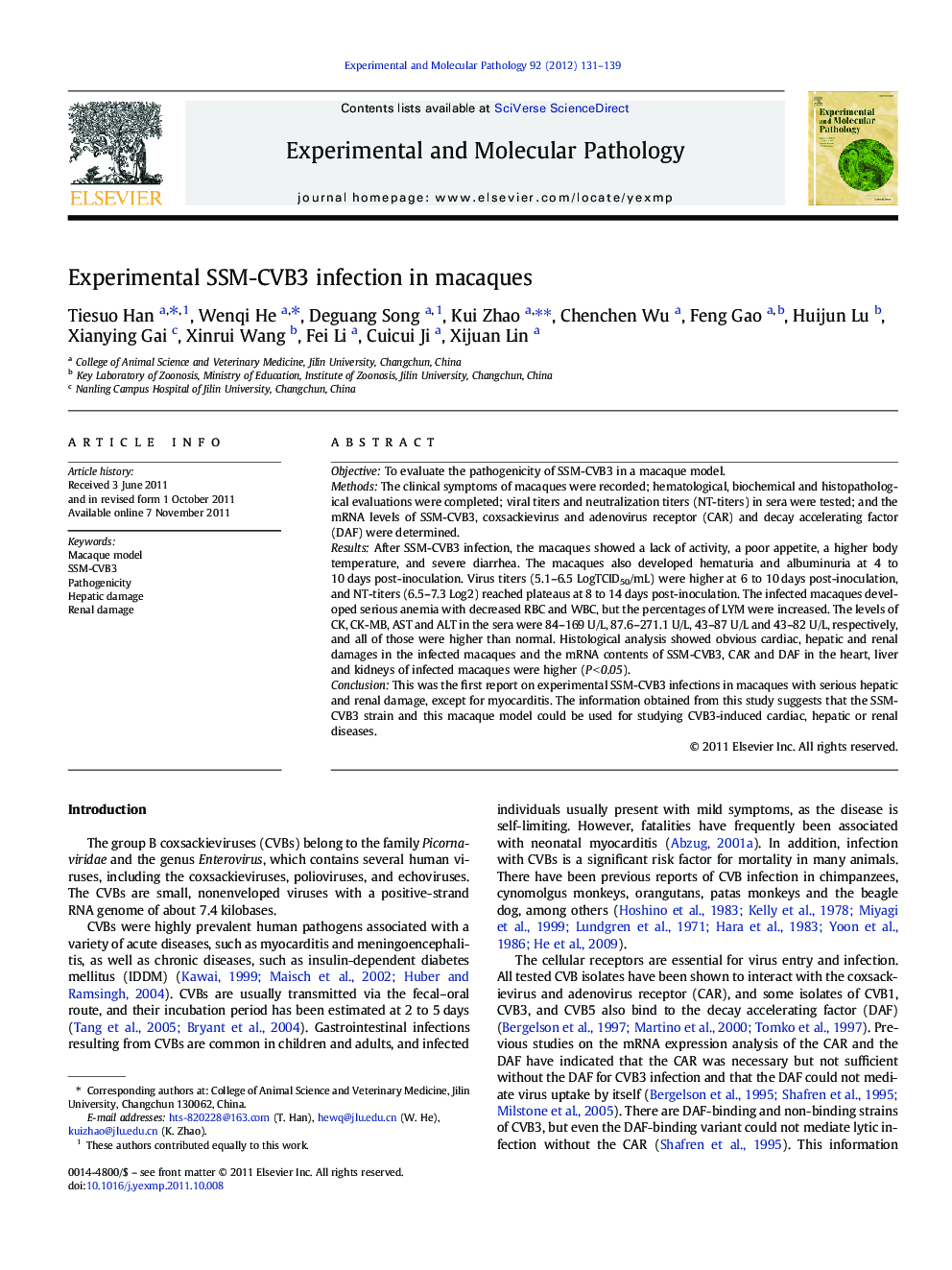| Article ID | Journal | Published Year | Pages | File Type |
|---|---|---|---|---|
| 2775437 | Experimental and Molecular Pathology | 2012 | 9 Pages |
ObjectiveTo evaluate the pathogenicity of SSM-CVB3 in a macaque model.MethodsThe clinical symptoms of macaques were recorded; hematological, biochemical and histopathological evaluations were completed; viral titers and neutralization titers (NT-titers) in sera were tested; and the mRNA levels of SSM-CVB3, coxsackievirus and adenovirus receptor (CAR) and decay accelerating factor (DAF) were determined.ResultsAfter SSM-CVB3 infection, the macaques showed a lack of activity, a poor appetite, a higher body temperature, and severe diarrhea. The macaques also developed hematuria and albuminuria at 4 to 10 days post-inoculation. Virus titers (5.1–6.5 LogTCID50/mL) were higher at 6 to 10 days post-inoculation, and NT-titers (6.5–7.3 Log2) reached plateaus at 8 to 14 days post-inoculation. The infected macaques developed serious anemia with decreased RBC and WBC, but the percentages of LYM were increased. The levels of CK, CK-MB, AST and ALT in the sera were 84–169 U/L, 87.6–271.1 U/L, 43–87 U/L and 43–82 U/L, respectively, and all of those were higher than normal. Histological analysis showed obvious cardiac, hepatic and renal damages in the infected macaques and the mRNA contents of SSM-CVB3, CAR and DAF in the heart, liver and kidneys of infected macaques were higher (P < 0.05).ConclusionThis was the first report on experimental SSM-CVB3 infections in macaques with serious hepatic and renal damage, except for myocarditis. The information obtained from this study suggests that the SSM-CVB3 strain and this macaque model could be used for studying CVB3-induced cardiac, hepatic or renal diseases.
